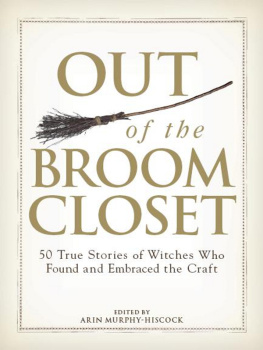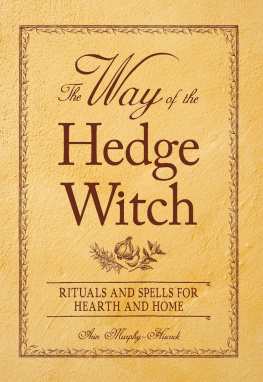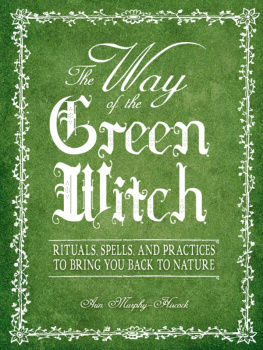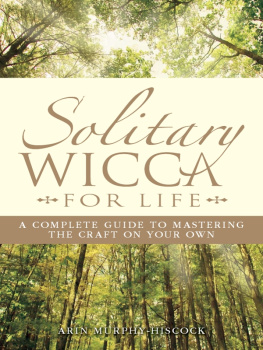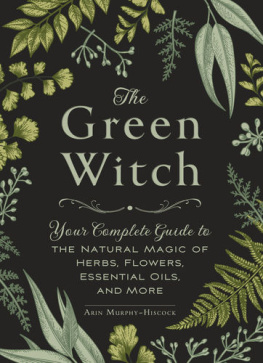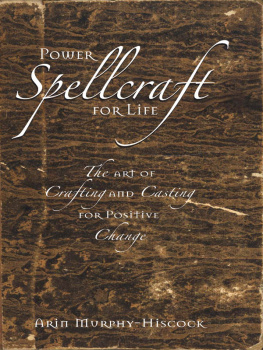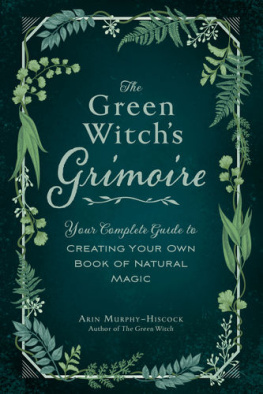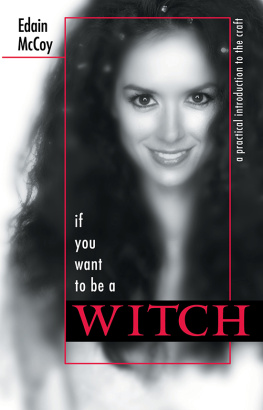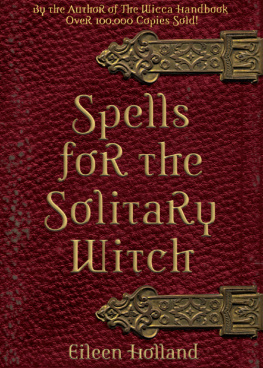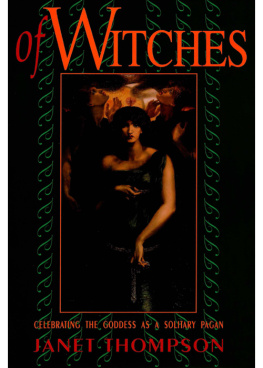
OUT
of the
BROOM
CLOSET
50 True Stories of Witches Who
Found and Embraced the Craft
EDITED BY
ARIN MURPHY-HISCOCK

DEDICATION
To all those who walk the path of alternative spiritualitypublicly or privately.
Copyright 2009 by F+W Media, Inc.
All rights reserved.
This book, or parts thereof, may not be reproduced in any form without permission from the publisher; exceptions are made for brief excerpts used in published reviews.
Published by
Provenance Press
an imprint of Adams Media, a division of F+W Media, Inc.
57 Littlefield Street, Avon, MA 02322. U.S.A.
www.adamsmedia.com
Provenance Press is a registered trademark of F+W Media, Inc.
ISBN-10: 1-59869-891-5
ISBN-13: 978-1-59869-891-6
eISBN: 978-1-44051-365-7
Printed in the United States of America.
J I H G F E D C B A
Library of Congress Cataloging-in-Publication Data
is available from the publisher.
This publication is designed to provide accurate and authoritative information with regard to the subject matter covered. It is sold with the understanding that the publisher is not engaged in rendering legal, accounting, or other professional advice. If legal advice or other expert assistance is required, the services of a competent professional person should be sought.
From a Declaration of Principles jointly adopted by a Committee of the American
Bar Association and a Committee of Publishers and Associations
Many of the designations used by manufacturers and sellers to distinguish their product are claimed as trademarks. Where those designations appear in this book and Adams Media was aware of a trademark claim, the designations have been printed with initial capital letters.
This book is available at quantity discounts for bulk purchases.
For information, please call 1-800-289-0963.
ACKNOWLEDGMENTS
My deepest gratitude goes out to all the contributors in this collection. Thank you for having the courage to talk about your pasts, your paths, and your thoughts on your experiences. Special mention goes to the ones who participated on a crazy deadline. You know who you are.
Andrea Norville hatched the idea; Kendra Vaughn-Hovey did some of the groundwork and handled the initial stage of the project; the anonymous copyeditors and proofreaders of Adams Media improved the product and made us all look fabulous.
TABLE OF CONTENTS
by Arin Murphy-Hiscock
by Deb Goeschel
by Debra Siegrist
by Joshua M. Thomas
by Ashleen OGaea
by Lynette C. Mansani
by Anda Powers
by Oisce
by Richard J. Goulart
by Paul McVicker
by Taras Stasiuk
by Erynn Rowan Laurie
by High Priestess Enoch
by Jessica Jenkins
by Tracey Costa
by Ceri Young
by Gregory Michael Brewer
by Cerridwen Johnson
by Junior Crone
by Michael Gleason
by Walter R. Hardin, Jr.
by Amy Midnight
by Delia E. Halnen-On
by Gina Ellis
by Steven Prince
by Bob Chipman
by Blade
by Elena M. Kelley
by Shoshana E. Berman
by Astarte Moonsilver
by Mael Brigde
by Icinia
by Paul Turnbull
by Kristen Adams
by Gwinevere Rain
by Jeffrey Jarvis
by John David Hickey
by Idril Rogers
by Bonnie S. Hann
by Janice Mathieson Wright
by Joan Withington
by Brendan Myers
by Brenda Gibson
by Sandi Dunham
by Rob St. Martin
by Deirdre Anne Hebert
by Mary Lavoie
by Toni Peebles Franks
by Amanda Hyde
by Meri Fowler
by Arin Murphy-Hiscock
INTRODUCTION
Some of us call ourselves witches or Witches. Some of us call ourselves Pagans, philosophers, humanists, or simply spiritual people. Others identify as Goddess-worshippers or Nature-honorers. Do the labels matter?
Sometimes they do. Sometimes we need a label to finally make sense of what we believe.
This anthology collects the first-hand experiences of real people as they discover, explore, and walk their Pagan paths. Whatever the word they have chosen to use to identify their spiritual choices, every single one of them is a regular, everyday person who has dealt with the pressure of self-identification, then identification within a larger community be it family, the workplace, or the public in general.
For most, the very first step of admitting to themselves they are Pagans is the hardest. In other words, candidly defining what they felt, dedicating themselves, or acknowledging in some way that this path, this faith, this spiritual way was their own, was the most difficult part. In effect, they came out of the broom closet to themselves. For some, once that first unveiling was complete, there was joy. For others, there was then a different kind of coming out requiredto those around them.
Not everyone in this anthology has chosen to publicly identify him or herself as a follower of an alternate spiritual path. For some it isnt importantthey consider spirituality a private and personal thing. Others identify themselves as Pagan only to other Pagans. Still others openly wear their religious symbols and demand time off for their holidays and festivals. Everyones choice is different, as it should be. There are people whose stories talk about how they are comfortable with operating within two religions at onceone in their hearts, and the other socially. As Oisce puts it, I believe that all gods are one god. I do not lie when I pray in the words of another religion because I believe. It is imperative to understand that every single contributor here, and every single reader, defines and deals with their spirituality in their own way. Taras Stasiuk clearly outlines that your questions and your answers are what count, not accommodating someone elses definitions and standards. For some, outlining the differences is what defines their path; for others, it is connecting the similarities.
There is a very wide range of paths and experiences illustrated in this book. Some of the names you might recognize; many you will not. Some people practice a very defined path; others are more free form. Different paths complement different lives; different avenues and practices provide the spiritual nourishment each of us seeks.
Despite the differences in paths and experiences, there are several common themes that surface again and again throughout these stories. One is the use of books to access or further knowledge. People read books and discover the existence of modern Paganism, or read in order to research this new spirituality to which theyve been introduced in some way. These books arent necessarily classifiable as New Age, either. Some read fiction, or mythology, or history texts and start to wonder if theres a modern analog.
Another common theme is the archetypal coming home sensation. After feeling out of synch, the practitioner discovers Paganism and feels as if it is what he or she has been looking for, or experiences a sense of comfort and belonging. Some people, such as Brenda Gibson, experience something moving and only later identify what the experience was. Ceri Young explains this feeling of coming home as being the relief of finally putting a name to all the different pieces of the puzzle that slowly collect throughout your life.
Next page
